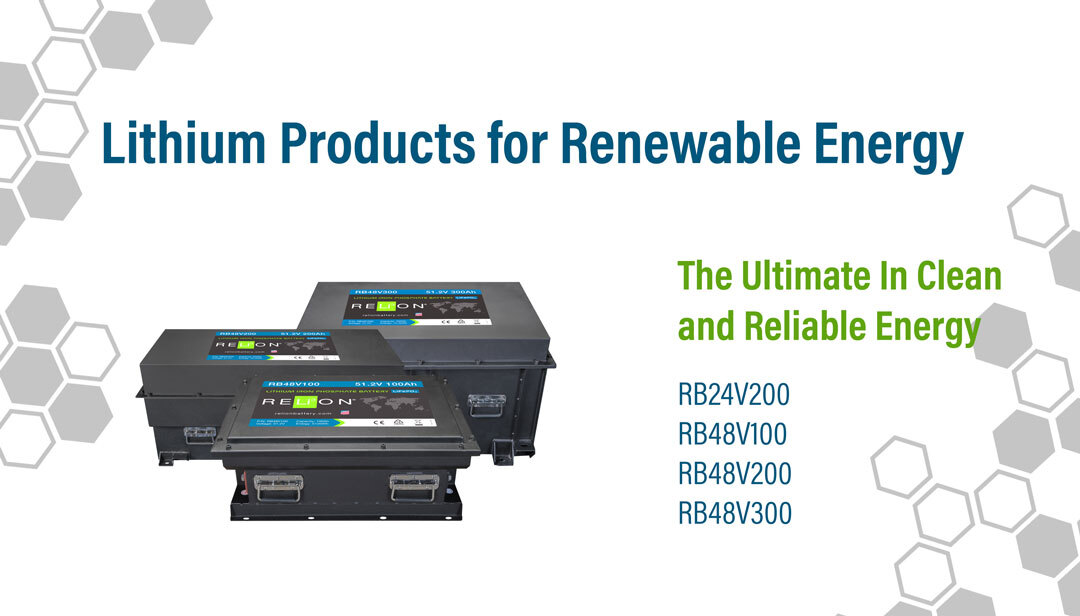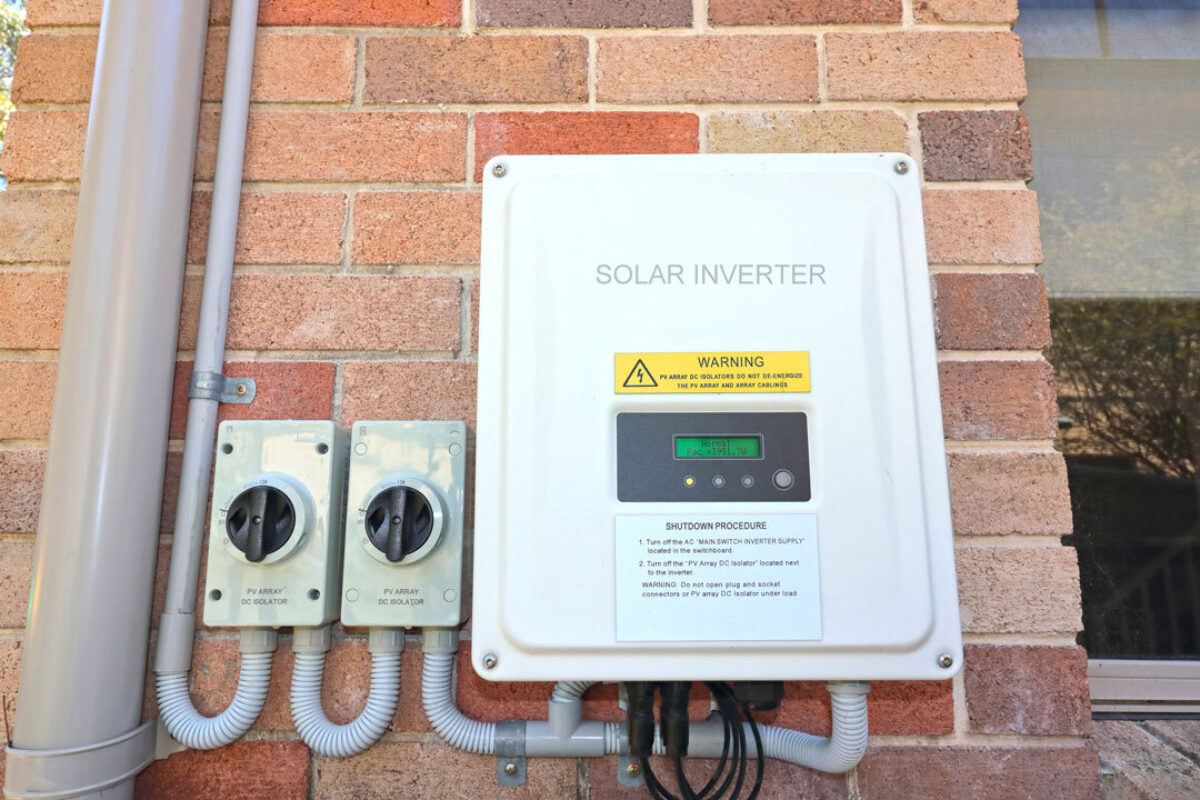Due to the rise of clean energy, more people are taking advantage of wind or solar-plus-energy storage systems than ever before, as they provide a sustainable, efficient, and versatile method of powering various appliances. However, with any storage system, you will need an energy source, a battery, and an inverter to make your self-sufficient dreams possible. Whether you are an avid camper, living off the grid, or in the market for a backup energy source, inverters can be essential tools for a multitude of scenarios and lifestyles. If you are interested in purchasing one, but you are not quite sure where to start, read on to learn everything you need to know about inverters, including how they work, types of off-grid inverters, and what you need to know before buying an inverter.

What are Inverters and How Do They Work?
Inverters are one example of a class of devices that are referred to as power electronics, which regulate the flow of electrical power. Inverters convert direct current (DC) electricity from the power source into alternating current electricity (AC). The inverter is able to accomplish this conversion by rapidly changing the direction of DC input back and forth. In fact, the input will reverse through the circuit nearly 60 times each second! Inverters are often used in solar-plus-storage systems because solar panels and batteries use DC, but most households as well as the electrical use AC. Therefore, to be able to use the energy generated by solar panels or stored in solar batteries in your house or in conjunction with the electrical grid, the current needs to be converted from DC to AC.
It’s important to note that in converting DC to AC, the inverter converts the DC voltage to an AC voltage by using semiconductors in order to quickly reverse the polarity of the direct current input. In the majority of cases, the input DC voltage - such as from a 12V or 24V battery - is usually lower, whereas the output AC voltage is equal to the grid supply voltage of either 120 volts, or 240 volts, depending on the country. As a result, you will just need to keep in mind what you plan to use the inverter for, how much energy is needed, and how long it will be used, as this will help inform what type of battery and inverter you should purchase.

Types Of Inverters
If you are interested in purchasing an off-grid inverter, there are two main types: pure sine wave inverters and modified sine wave inverters. The three key differences to keep in mind are cost, efficiency, and usage. It is important to evaluate your needs in order to identify which one is the most practical and financially feasible.
Pure Sine Wave Inverters
Pure sine wave inverters use the type of power that typically comes from a generator or a utility company. While these inverters are often more competitively priced, they are designed to work optimally on sine waves, power large appliances, and allow its users to be more independent and resilient. Unsure whether or not a pure sine wave inverter is necessary for your lifestyle? If you are powering a sensitive device such as a microwave, refrigerator, or anything with a motor, this is likely the route you should take. This will ensure that your inverter will be able to produce clean and reliable electricity for years to come.
Modified Sine Wave Inverters
On the other hand, modified sine waves work with high frequencies that are above 60Hz. They can still power most appliances, however, they are unlikely to function as optimally as they would when using a pure sine wave inverter. For instance, a clock that runs on a modified sine wave would still work, but it could run faster or slower. If it’s not a deal breaker to have small impurities in the functionality of your device, then a modified sine wave inverter could suffice in this case. Fortunately for buyers on a budget, modified sine wave inverters are typically more affordable.
What To Know Before Purchasing An Inverter
Purchasing an inverter can feel like a daunting decision, especially if you need it for delicate appliances, off-grid living, or when the lights go out in a storm. You want to feel confident that you can rely on your inverter for any situation that may arise.
- Your Power Needs & Inverter Sizing
- Finding The Best Batteries to Pair with Your Inverter

Your Power Needs & Inverter Sizing
Before getting set on one specific inverter, it is imperative to establish the electrical load necessary to power your appliances. To calculate this properly, be sure to ask yourself the questions below:
- How many continuous watts does your appliance require to function?
- How many different appliances do you plan to run at once?
- How much of a power draw (or surge) is created when the appliances are turned on?
- For how long do you need to use each appliance?
Once you have your answers, you can identify an inverter and a battery that fits your needs based on your peak load requirements. Peak load is the maximum electrical power demand over a specific time period. Calculate the load by checking the wattage listed on each appliance or tool you plan to use and add them all together. To account for some energy inefficiencies that could occur, calculate your energy costs at 20% higher than the sum of all your appliances (in watts). To establish the voltage of an inverter, look at the electrical specifications listed on the product or information packet.
For example, let’s say that you need 1,200 watts to run your laptop and your toaster oven at the same time. Take the 1,200 watts and add 240 (which is 20% of the 1,200 watts), and this gives you 1,440 watts. In other words, you will need a fairly average sized inverter of at least 2,000 watts. As context, the most common inverter size for RVs is 2,000 or 3,000 watts.
Finding The Best Batteries to Pair with Your Inverter
It is also important to note that, in addition to inverters, batteries play a major role in power systems. They allow for freedom, the use of clean energy, and security. If you plan to use renewable sources like wind or solar to power your system, the energy absorbed will need to be converted to alternating current (AC). In order to make this possible, the battery is connected to the inverter which then distributes power to the outlets and appliances. Since inverters and batteries go hand-in-hand, it’s essential to determine the amount of time you can use your appliances for at peak load. Then, you can calculate the total watt-hours a battery is capable of storing by using a “battery backup time” formula specific to the type of battery you have. Whether you are looking for an inverter and battery pairing for your RV, van, boat, tiny house, or off-grid cabin, RELiON’s lithium iron phosphate batteries pair well with commonly used inverters from brands such as Victron Energy. If you are searching for a sustainable and long-lasting battery option that provides seamless integration with your inverter, RELiON can provide you with a worry-free energy storage system.

As you shop around for an inverter, it is also crucial to purchase from a reputable and trusted brand. Remember to inform yourself about how to use an inverter safely and consult a professional if you are unsure about something. Although an off-brand product may be advertised to function the same as a well-known one, don’t forget to ensure the inverter has temperature protections as well as high and low voltage. Now that you have learned everything there is to know about inverters, you are prepared to choose the best one for your lifestyle. Of course, if you need any other help along the way, feel free to contact our experts for help with selecting the right inverter for your needs.
